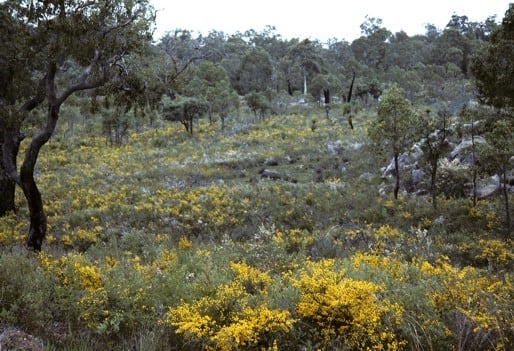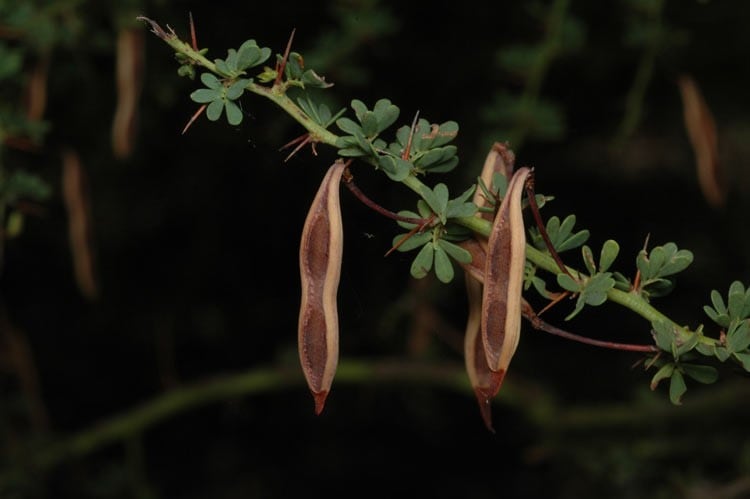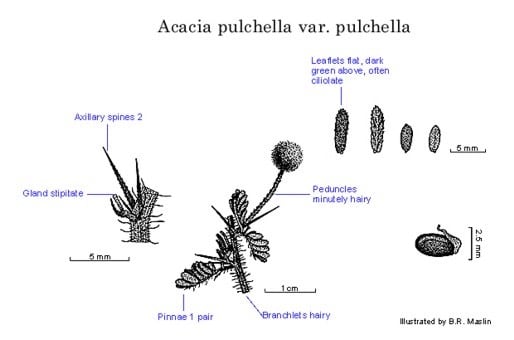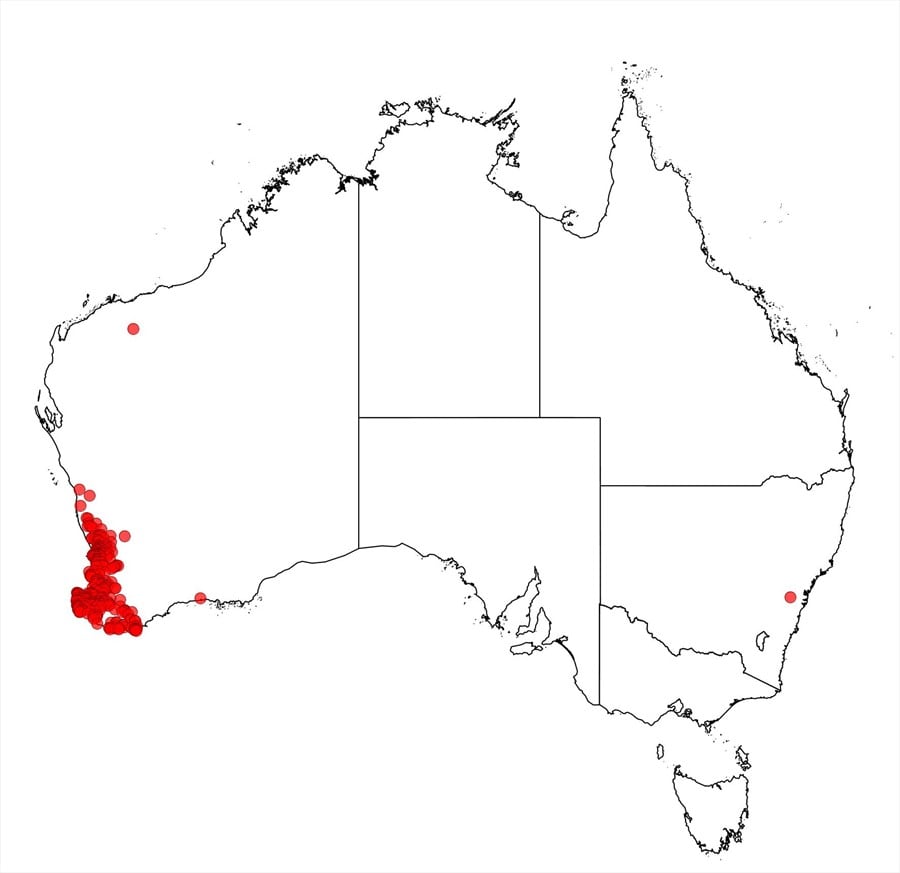Acacia pulchella R.Br. var. pulchella
WATTLE
Acacias of Australia
Family
Fabaceae
Distribution
Occurs from near Arrino and Wyalkatchem S to Augusta and near Albany, W.A. Naturalized in the Blue Mts, at Lawson, N.S.W.
Description
Shrub, occasionally prostrate. Branchlets variably hairy, sometimes almost glabrous. Axillary spines usually 2 per node. Petiole 0.5–1.5 mm long; pinnae 3–10 mm long; pinnules 4–8 pairs, oblong to narrowly oblong, 1–5 mm long, 0.5–1.5 mm wide, usually dark green above and light green below, glabrous or ciliolate, with midrib and lateral nerves on lower surface often ±thickened. Peduncles usually 5–15 mm long and minutely hirsutellous to puberulous; heads usually 24–40-flowered; bracteoles acute to acuminate. Pods to 4.5 cm long, 3–4 mm wide, glabrous, infrequently pubescent.
Habitat
Grows mostly in lateritic soil in woodland, often in Jarrah (Eucalyptus marginata) and Marri (Corymbia calophylla) woodland and forest.
Specimens
W.A.: Darling Ra., E.Pritzel 520 (AD, B, E, G-DC, K, L, M, MO, NSW, US, W, Z); 12.3 miles [19.8 km] NNE of Palgarup on South Western Hwy, M.D.Tindale 3914 (NSW, PERTH).
Notes
Branchlets on plants from Moora to Cape Naturaliste are usually pilose and hirsutellous admixed; these individuals correspond to the type of A. pulchella var. hispidula. The pilose layer is commonly absent on plants in the Cape Naturaliste-Albany area, and the indumentum is often appressed and sometimes very sparse; these individuals correspond to the type of A. pulchella. See B.R.Maslin, Nuytsia 1: 400 (1975), for full discussion. Putative hybrids occur with var. glaberrima and var. reflexa. The above description does not include the following variants. Variant 1 has peduncles 1-4 mm long, appressed-puberulous or glabrous; heads 10-20-flowered; bracteoles ±aristate. Its distribution is scattered from near Busselton to Albany, (e.g. 14 km due ESE of Margaret River, B.R.Maslin 6097, PERTH). Specimens with very short peduncles may superficially resemble A. amputata but are most readily distinguished by their green pinnules, longer glands (1-2 mm), aristate bracteoles, longitudinal and non-mottled seeds, and usually longer pods (< 15 mm long). Variant 2 has spines 1 per node; pinnules often very shallowly concave and (judging from dry specimens) glaucous to subglaucous. It occurs W of Arrino, Northam-Toodyay area and near Wyalkatchem, (e.g. 1.6 km N of Wyalkatchem towards Koorda, B.R.Maslin 157, PERTH). Variant 3 comprises prostrate plants. It occurs near Denmark, (e.g. Boat Harbour, W of Denmark, K.F.Kenneally 71/281B, PERTH).
FOA Reference
Data derived from Flora of Australia Volumes 11A (2001), 11B (2001) and 12 (1998), products of ABRS, ©Commonwealth of Australia
Author
B.R.Maslin
This identification key and fact sheets are available as a mobile application:
URL: https://apps.lucidcentral.org/wattle/
© Copyright 2018. All rights reserved.










